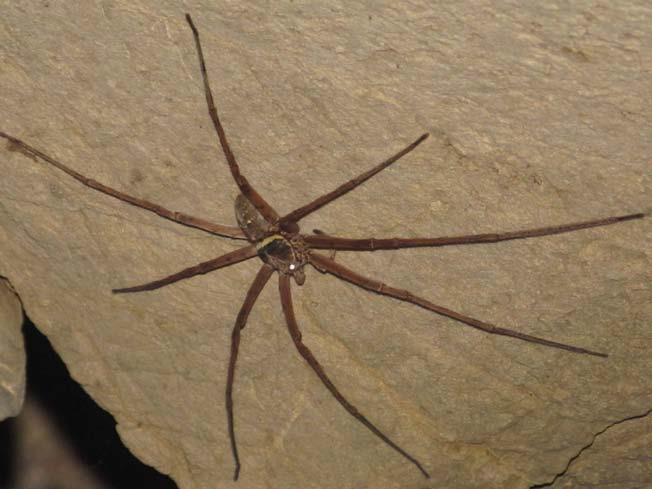Pham Dinh Sac
The aim of the project is to study the cave Arachnid fauna in the Ha Long Bay and propose management solutions to conserve the cave biodiversity value.

Huntsman spider.
Arachnids living in caves are not only diversified in number of species and individuals but also very typical in morphology and carry high endemicity. It is separation from the external environment, together with differences in light regime as well as moisture that helps form specialized species adapted to living conditions in caves. Thus many new taxons have been recorded in the caves around the world.
It has been estimated that the cave systems of Vietnam are homes to diverse Arachnid fauna, which promisingly contain undiscovered species. Besides, many Arachnid species are threatened by human impacts and are at risk of extinction if not preserved. Due to the economic development of the local, many caves have been exploited to serve the tourism activities. The development of tourism has not only destroyed the natural structure of the caves, but also affected the fauna living in the caves. Isolated from the mainland, the Arachnid fauna in Ha Long Bay caves is certainly characterized by high endemism. This is the first study of Arachnids in the cave systems in this area. The research will make statistics and assess the current status of the species existing in the study area. Arachnids’ habitat has been narrowed due to tourism activities; they now cluster in the any location. Basing on the results of the survey we will establish “an atlas of cave biodiversity value in the Ha Long Bay." The atlas includes the information on: the caves in Ha Long Bay, the species found, details of species distribution, status of the species.
Arachnids will be surveyed and collected in the caves, including natural caves and caves with tourism activities. Investigate and locate the main residence of Arachnids in caves as the basis for the management of caves to preserve the of cave biodiversity value. The result of study as a background for proposing solutions to managing the caves to preserve value of cave biodiversity. An atlas of cave biodiversity value will be used to carry out the works of cave biodiversity value conservation and monitoring for the managers, conservators, local people and tourists.